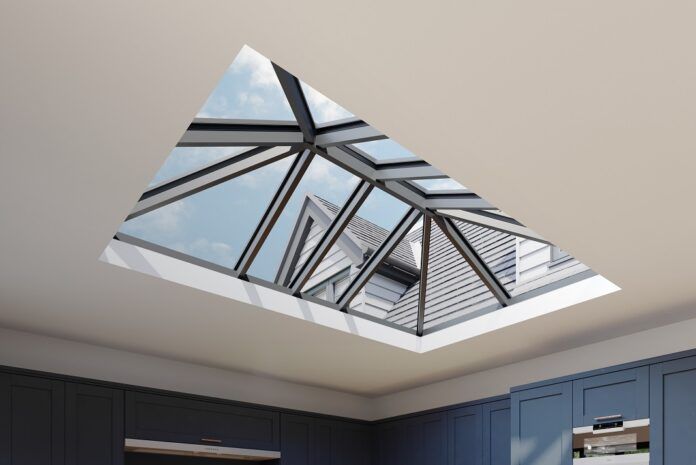
AluFold Direct has launched its new Xenlite roof lantern. Xenlite has a 38mm frame, which Alufold reports does not affect strength or performance. With thermally broken hip beams, it meets the requirements of the new Part L which comes into force in June.
Xenlite has been designed so that the glazing clicks into the flange on one side of the ring beam as soon as it placed into position. A pressure plate with integrated cover caps then makes it easy for one person to clip in the glazing all the way round so there is no need to reach across or around the roof to screw in the fixings. Neat, fast-fit end caps are simply screwed on to complete the installation.
The lantern comes with a fixed 25° pitch regardless of size. This ensures that it fits into the mainstream home extension and orangery market.
Xenlite is the first new product to be launched by AluFold Direct since managing director Russell Yates joined the team from AluK. Russell led the design team responsible for all of AluK’s most familiar products, including the iconic BSF70 bi-fold. He has ensured that the new lantern is just as fitter and fabricator friendly, the business’ representatives claim.
Xenlite is supplied in kit form, with standard stock sizes available on a fast 5-day lead time and bespoke sizes available to order in around 2 weeks. It is being manufactured on a dedicated assembly line at AluFold Direct’s highly automated factory in Blackburn, using new machinery which delivers a consistent, precision output every single time.
Russell said: “Xenlite is made the way that we believe roof lanterns should be and addresses all the things that installers told us they don’t like about the competition. Everything, from the four-sided glass retention to the profile-shaped cover caps, has been designed to suit the needs of the installer. It’s not just about making the product easy to fit, it’s about protecting installer margins by minimising time on site and eliminating costly call backs.”



